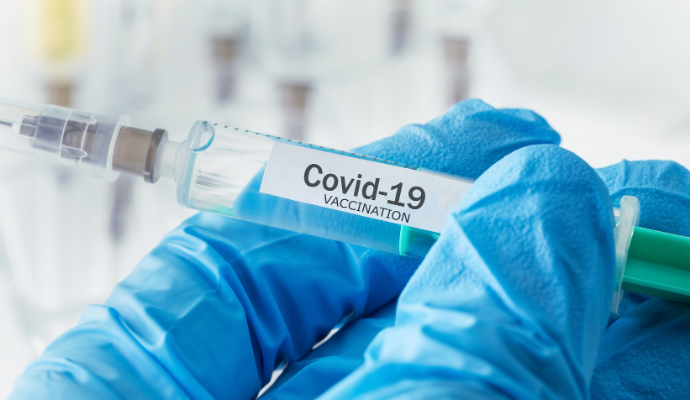FDA Analysis Finds J&J’s COVID-19 Vaccine Safe, Effective
Phase 3 data submitted to FDA showed that a single-dose of the COVID-19 vaccine was 66.9% effective 14 days after vaccination and 66.% effective 28 days after vaccination

Source: Getty Images
- A recent FDA analysis found that Johnson & Johnson’s COVID-19 vaccine met requirements for emergency use authorization.
The data submitted to FDA by the pharmaceutical company was from an ongoing multi-national Phase 3 randomized, double-blind and placebo-controlled trial of the single-dose of the vaccine known as Ad26.COV.2. The trial involved nearly 40,000 participants.
Specifically, Ad26.COV.2’s efficiency against laboratory-confirmed, moderate-to-severe COVID-19 was 66.9 percent 14 days after vaccination and 66.1 percent 28 days after vaccination.
Secondary analysis showed that vaccine efficiency against severe/critical COVID-19 14 days after vaccination was 76.7 percent and 85.4 percent 28 days after vaccination.
A post hoc analysis of all COVID-19-related hospitalization starting 14 days after vaccination also found that there were just two cases of hospitalization in the vaccine group and no cases after 28 days versus 29 cases of hospitalization in the placebo group and16 cases after 28 days.
Notably, there have been seven COVID-19 related deaths reported in the study, all of which were in the placebo group. There have been no coronavirus-related deaths in the Ad26.COV.2 group, the analysis said.
Researchers noted that there was more frequent mild-to-moderate reactogenicity in participants 18 to 59 years of age compared to older participants. But there were no specific safety concerns identified in subgroup analyses by age, race, ethnicity, medical comorbidities, or prior COVID-19 infection.
Any solicited, unsolicited, and serious adverse events in these subgroups were generally consistent with the overall study population.
The FDA also showed that Ad26.COV2.S can be stored at 2 degrees to 8 degrees Celsius, or 36 degrees to 46 degrees Fahrenheit, in a multi-dose vial containing 5 doses at 0.5 milliliters each. Unpunctured vials may be stored between 9 degrees to 25 degrees Celsius, or 47 degrees to 77 degrees Fahrenheit, for up to 12 hours.
After the first dose has been withdrawn, the vial should be held between 2 degrees to 8 degrees Celsius, or 36 degrees to 46 degrees Celsius, for up to six hours or at room temperature up to two hours. The vial should be discarded if the vaccine is not used within these timeframes, FDA said.
The data presented in the analysis will be discussed by the FDA and Johnson & Johnson leaders at a meeting on Friday. The meeting could result in an official emergency use authorization for the vaccine.
At the beginning of February, Janssen, a division of Johnson & Johnson, submitted an emergency use authorization request to FDA for Ad26.COV.2.
FDA issues emergency use authorizations after determining that certain statutory requirements are met. These requirements include that the totality of scientific evidence available, including data from an adequate and well-controlled trial, show that the product may be effective to prevent, diagnose, or treat such serious or life-threatening diseases or conditions that can be caused by SARS-CoV-2.
Additionally, the known and potential benefits of the product, when used to diagnose, prevent, or treat the identified serious or life-threatening disease or condition, outweigh the known and potential risks of the product.
Finally, there must be no adequate, approved, and available alternative to the product for diagnosing, preventing, or treating the disease or condition.
As of February 17, 2021, there were over 110 million cases of COVID-19 worldwide. In the US alone, over 27 million cases and 486,000 deaths have been reported to CDC, FDA said.
FDA has already issued two emergency authorizations to Pfizer and Moderna for their respective mRNA-based COVID-19 vaccines after they proved to be over 90 percent effective in clinical trials in November.
